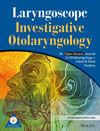Patient perspectives on international multidisciplinary consensus criteria for chronic rhinosinusitis disease control
Abstract
Objectives
Recently, a set of consensus criteria and near-consensus criteria for the evaluation of chronic rhinosinusitis (CRS) disease control was identified by an international multidisciplinary panel of key stakeholders. The objective of this study is to evaluate patient perspectives on these disease control criteria.
Methods
This is a qualitative phenomenological study using constant comparative methodology. Twenty-one one-on-one interviews, ranging from 6 to 15 min and based on a standardized semi-structured script, with CRS patients from diverse backgrounds were performed. The authors analyzed transcripts of the interviews to identify recurrent themes in patient responses. Conclusions were drawn based on these themes.
Results
All participants agreed with the consensus criteria (overall symptom severity, nasal obstruction severity, patients' self-assessed CRS control, and need for CRS-related oral corticosteroids), and most participants agreed with near-consensus criteria (nasal endoscopy, smell loss and nasal drainage severities, impairment of day-to-day activities, and overall quality of life) identified by the international multidisciplinary panel. Some patients disagreed with inclusion of smell loss due to common etiologies—such as post-viral or iatrogenic causes—that would not necessarily be an indicator of active sinonasal inflammation. One theme that emerged was the need for a facial pain/pressure criterion to be added.
Conclusions
CRS patients overwhelmingly affirmed recently described consensus and near-consensus criteria for CRS disease control with the caveat that a question asking about facial pain/pressure should be included as well. Recently, identified consensus criteria for CRS disease control should be interpreted within the context of patient perspectives.

 求助内容:
求助内容: 应助结果提醒方式:
应助结果提醒方式:


